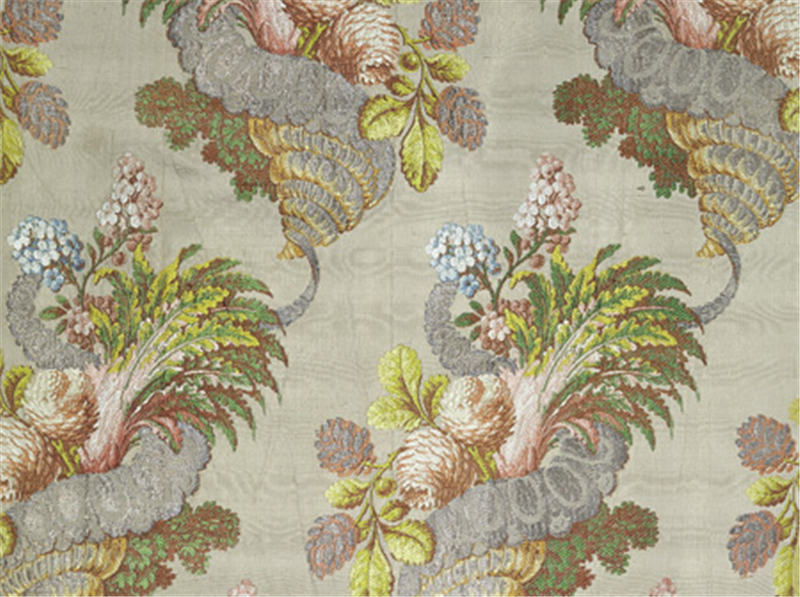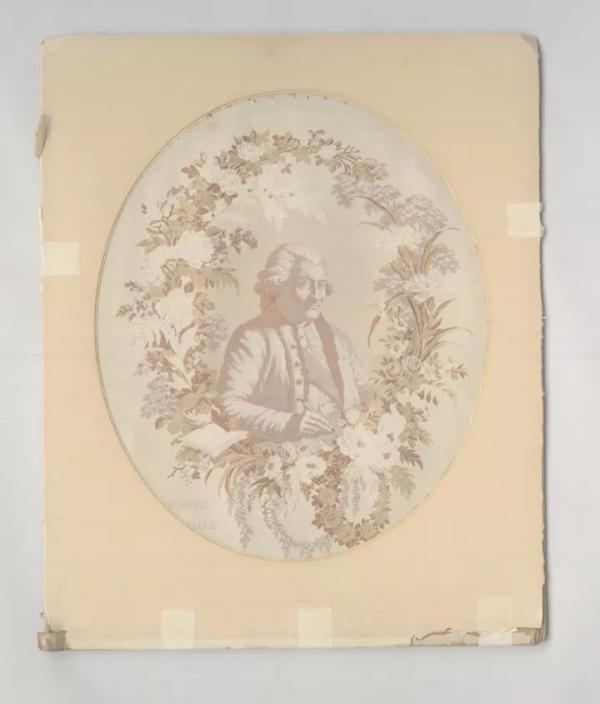Textile Production in Europe: Silk, 1600–1800

Before the Industrial Revolution, the creation of a patterned silk textile required a skilled weaver and a considerable investment in equipment and raw materials. The warp was threaded on the loom according to the design of the textile, after which two people were required to weave the textile—a weaver who inserted the wefts and a “drawboy” who controlled the pattern mechanism. As a result, patterned silks and velvets, especially those embellished with precious metal threads, were produced in relatively few major centers in Europe where raw materials, specialized looms, and skilled artisans could be gathered together efficiently.
Patterned silk velvet was the most expensive and prestigious of all woven textiles, but other patterned silks, such as damasks and brocades, were costly as well. The city-states of the Italian peninsula produced the majority of European luxury silks during the Middle Ages and the Renaissance, and continued to dominate the production of luxury textiles well into the seventeenth century. During the fifteenth and sixteenth centuries, Venice and Florence were renowned for their sumptuous velvets incorporating gold and silver threads with large floral patterns after the pomegranate motif. During the seventeenth century, Genoa began producing polychrome floral velvets with large-scale patterns primarily intended for wall covering and furniture. This so-called Genoa or jardinière velvet remained the preferred choice for formal interiors through the eighteenth century, even as fashions in dress began to call for lighter fabrics.
A sizeable silk-weaving industry existed in France from the fifteenth century, centered in the city of Tours. Tours had the advantage of being close to Paris and the primary French consumers of luxury textiles: the court and nobility. Under King Louis XIV (r. 1643-1715), the superintendent of finance Jean-Baptiste Colbert (1619-1683) launched an ambitious scheme to organize and promote the textile industries in France, both at home and abroad. Lyon, which had previously been an important trade center for merchants importing Italian textiles, emerged as the center of the reorganized industry, and subsequently overtook Tours as the largest French producer of luxurious silk textiles.
Silk weaving in Lyon was supported by other subsidiary crafts such as spinning, dyeing, and the printing of special paper for textile design drawings, in addition to the presence of merchants who supplied materials and sold the finished products. It has been estimated that more than one-third of the population of Lyon, almost 15,000 workers, was involved in the silk industry either directly or indirectly by the late eighteenth century.
The revocation of the Edict of Nantes in 1685 encouraged large numbers of Huguenot (French Protestant) artisans to relocate from France to England, the Netherlands, and Germany. The area of Spitalfields, east of London, was one of the main beneficiaries of this influx and subsequently became known for its fine dress silks. In the mid-eighteenth century, English silk designers distinguished their work from the prevailing French taste for generalized floral types by producing spare floral patterns often based on actual botanical specimens or engravings. It is during the early eighteenth century that the identities of individual silk designers become known. One designer, an Englishwoman named Anna Maria Garthwaite (1690–1763) is notable for the fact that a large collection of her designs have survived, and silks woven to these designs have been identified.
Technical innovations to the loom occurred throughout the eighteenth century as weavers tried to speed up the process of loom preparation and weaving. Philippe de Lasalle (1723–1804), a designer, weaver, and entrepreneur working in Lyon, invented a removable version of a device called a semple. The semple was a key part of the mechanism that controlled the pattern woven on an individual loom. Lasalle’s device could be transferred from one loom to another, without having to program the pattern a second time. The removable semple also facilitated the weaving of the larger designs intended as wall coverings, for which Lasalle was known. He was honored by the French government for this invention in 1774, and it was one of many improvements that paved the way for the development of the so-called Jacquard loom in 1801. This loom, which came into general use in the early nineteenth century, could be programmed to weave even more complex patterned textiles without the aid of a second worker.

Philippe de Lasalle
The upheaval of the French Revolution severely damaged the French silk-weaving industry. This conflict, along with the trend in dress and furnishings for simpler styles, put many textile artisans out of work throughout Europe. In France, Napoleon I (1769–1821) did much to revive the luxury industries when he commissioned new furnishings for the redecoration of his imperial residences in the early nineteenth century, resulting in the style now known as Empire.
Melinda Watt
Department of European Sculpture and Decorative Arts, The Metropolitan Museum of Art

